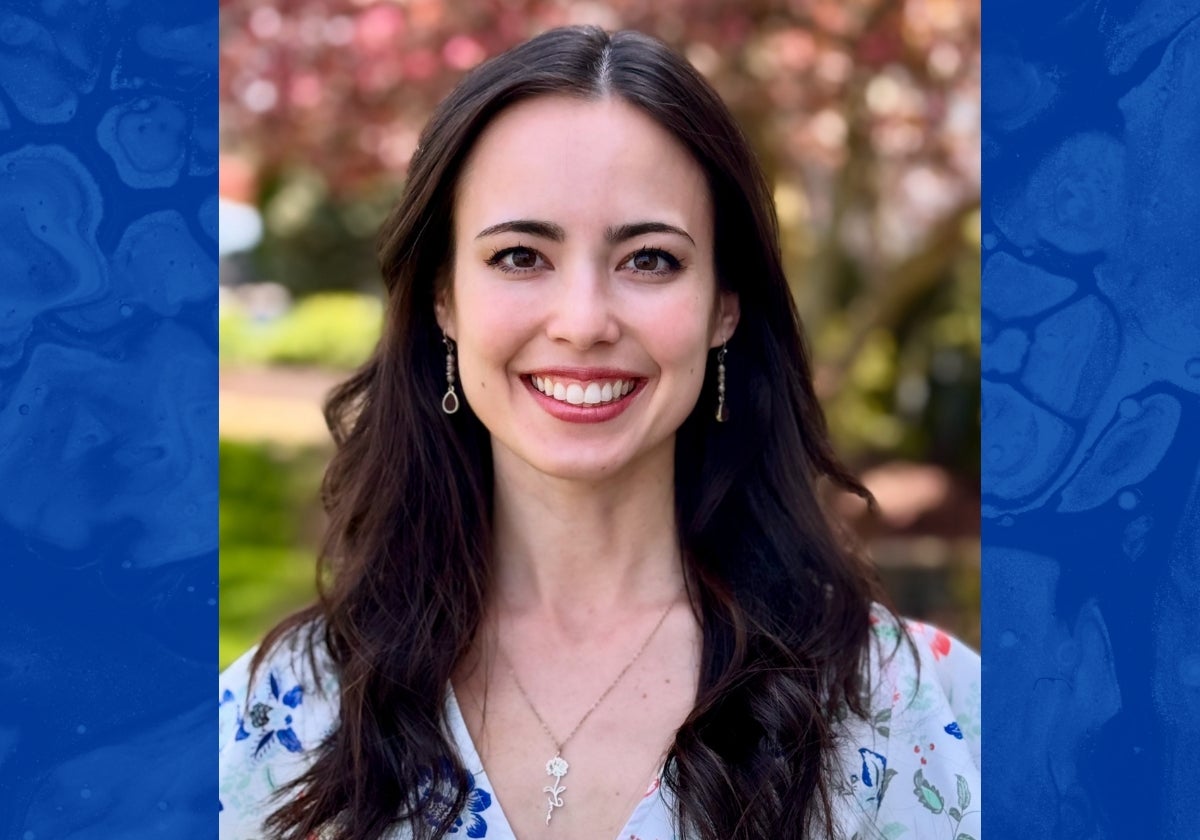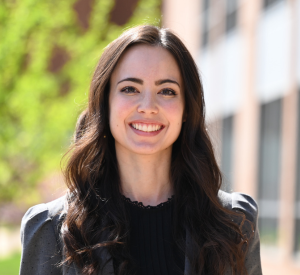This fall, Assistant Professor Julie Faieta began her role as director of the Master of Rehabilitation Technology (MRT) program at the School of Health and Rehabilitation Sciences (SHRS). Faieta brings an extensive background in assistive technology and Alzheimer’s research, and is eager to increase the program’s visibility to a broad audience of prospective students.
Faieta’s professional journey began as an occupational therapist. The person-first focus of her training and the evidence-based care and technology solutions from her clinical experiences continue to be a lens through which she approaches all her work: each person is an individual with unique needs, preferences and health considerations.
In her PhD program at Ohio State University, Faieta worked in an interdisciplinary setting as a clinician among a team of engineers and gained an appreciation for the practically limitless landscape that rehabilitation technology offers. She then went on to a postdoctoral position at Université Laval in Quebec to further her training under leaders in the field of rehabilitation technology and to gain experience as an international trainee, which has served her well working with international students at Pitt.
Read on to learn more about what Faieta brings to the Pitt Master of Rehabilitation Technology program and its students.
MRT Program Director Role
Tell us about your time at the University of Pittsburgh.
I started my role at the University of Pittsburgh in 2021, both in a research and teaching capacity. One of the opportunities I have had is to help expand the types of projects carried out here in the Rehabilitation Science and Technology Department. I came eager to build smart technology-focused solutions and have been able to work with collaborators and students with diverse experiences (computer science, artificial intelligence, bioengineering, neuroscience, etc.) to do just that!
In addition to my research role, I teach one of the program’s evidence-based practice courses. My love for this content has grown each year that I teach the course—it is so important that our graduates push for evidence-based practice in any setting they choose to work in! Rehabilitation technology professionals must be able to understand the state of the science in their field and truly grasp how to consume science in an informed manner.
What do you like about teaching and working with students?
I love helping students discover their unique strengths and interests. Seeing them have that “aha” moment—when a concept clicks or when they realize they have something valuable to contribute—is one of the most rewarding parts of my job. I didn’t always plan to go into education, but I have always been passionate about mentorship and empowering others. Becoming a faculty member and now program director has given me the chance to do that every day in a way that shapes the future of the field.

What made you interested in becoming program director?
My time at Pitt has been incredibly rewarding. I’ve had the opportunity to work with brilliant colleagues and talented students while building research programs focused on technology, aging and caregiving.
What drew me to the program director position was the chance to help shape the next generation of rehabilitation technology professionals. I see this role as a way to bring my experience as a clinician, researcher and innovator together to create an even more vibrant and inclusive program that welcomes students from a wide variety of technical and training backgrounds and gives them the tools to pursue meaningful, impactful careers.
What strengths are you bringing to the program?
I bring an interdisciplinary perspective and a deep commitment to innovation. My background spans occupational therapy, neuroscience, digital health and rehabilitation technology, which helps me connect students with diverse opportunities across research, clinical practice and industry. I also bring strong ties to community partners, health systems and technology companies—relationships that can translate into real-world experiences, internships and career pathways for our students!
Smart Technology and Alzheimer’s Research

Tell us about your interest in Alzheimer’s research.
My interest in Alzheimer’s research is very personal. My grandmother was diagnosed with Alzheimer’s over ten years ago, and our whole family has been on that journey with her ever since. These stories are ever present and they motivate me every day to find ways to make life easier for people living with dementia and those who care for them.
Much of my research centers on developing smart technology-based solutions for Alzheimer’s disease and related dementia populations, and perhaps more so, their caregivers. Like many people, I am eager to see pharmaceuticals meaningfully stem the impact of dementia in the future. However, I am also driven by two considerations, 1) we need attainable and generalizable solutions now, not later, and 2) pharmaceutical solutions don’t impact disease in a vacuum—there are often heavy side effect considerations that make these options non-preferrable or not acceptable to many.
So, the teams I work with here at the University of Pittsburgh are working to put technology-based health support into the hands of dementia caregivers to ensure the highest level of care possible for all affected!
What is your role in the American Congress of Rehabilitation Medicine?
The American Congress of Rehabilitation Medicine’s Neurodegenerative Networking Group (NDNG) is such a special community. It brings together clinical scientists from many different disciplines who share a passion for improving the lives of people with neurodegenerative conditions.
I first got involved with the NDNG as a student back in 2017 and quickly found it to be a welcoming and inspiring space. Since then, I’ve helped grow the group’s Alzheimer’s Disease Task Force during my postdoc and now in my early career role at Pitt. I currently serve as chair-elect of the NDNG and am especially excited about finding new ways to engage and support students and early-career professionals in the NDNG over the next few years.
How are students involved in research?
Students are integral to nearly every project I work on—from designing and testing technology solutions, to analyzing data, to co-authoring publications and presenting at conferences. I strive to create opportunities where students can apply classroom learning to real-world problems and gain hands-on experience that strengthens both their technical and professional skills!
The Future of the MRT Program

Where do you see the MRT program in the next five years?
In the next five years, I want to see our program known not only for its academic excellence but also for its ability to launch students into a wide range of exciting career paths. This means:
- Diversifying student recruitment by reaching candidates from engineering, computer science, health sciences and other technical fields who may not have previously considered rehabilitation technology.
- Expanding our training outputs to include opportunities that align with emerging job markets, for example, digital health, AI-driven assistive technologies, inclusive design and industry partnerships.
- Building visibility and reach through new collaborations, dissemination of student projects and events that connect students with thought leaders and potential employers.
Ultimately, I want our graduates to be recognized as problem-solvers and innovators who can make an impact wherever they go, whether in clinical settings, industry, research or entrepreneurial ventures.
Fun Facts!
What do you like to do outside of the classroom?
I love baking—always gluten-free, which makes it a bit of a fun challenge, but I enjoy it just as much! You can also find me at Pittsburgh Ballet taking classes, since dance is my favorite way to stay active. And I’m a big fan of board games. I have a monthly game night with friends from my church that I look forward to every time.
Related Stories

Master of Rehabilitation Technology Program Director Julie Faieta shares what makes the program stand out and how it prepares students for meaningful careers in rehabilitation technology.

